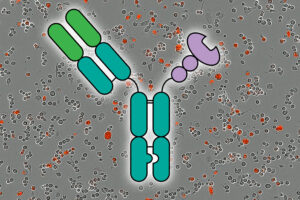
In a groundbreaking advancement in the field of assisted reproductive technologies, researchers at Cornell University have unveiled a revolutionary device designed to automate and simplify the process of oocyte cumulus removal. This critical step in fertility treatments has traditionally required skilled embryologists and sophisticated laboratory environments. The new device, powered by vibrations, promises to extend these procedures to regions lacking such resources, offering hope to millions of couples worldwide struggling with infertility.
The innovation, described as a “potential game-changer” by Alireza Abbaspourrad, associate professor at Cornell’s College of Agriculture and Life Sciences, could significantly reduce costs and improve accessibility to fertility treatments globally. “It reduces the need for skilled technicians, minimizes contamination risks, and ensures consistent results,” Abbaspourrad stated. The research, co-authored by Abbaspourrad, was published on September 5 in the journal Lab on a Chip.
Revolutionizing a Critical Procedure
In the realm of fertility treatments, the removal of cumulus cells from oocytes, known as cumulus removal (CR), is a vital procedure. This process is essential for assessing oocyte maturity prior to sperm injection or ensuring successful fertilization during in vitro fertilization (IVF). Traditionally, CR is performed manually using a micropipette, a method that demands precision and expertise. Errors in this delicate process can lead to damaged oocytes or unsuccessful fertilization.
The Cornell team’s innovation involves a disposable, open-surface chip that employs vibration-induced flow to automate CR. This chip features a spiral array of micropillars that, when vibrated, create a whirling flow to separate smaller cumulus cells from larger oocytes. “The process is fast, efficient, noninvasive, and more consistent,” explained Amirhossein Favakeh, a doctoral candidate and co-author of the study. “The oocytes remain safely in the loading chamber, while the cumulus cells are swept into an adjacent collection well.”
Testing and Results
The researchers conducted tests on mouse oocytes, which share genetic similarities with human eggs, to optimize the system. Adjustments were made to vibration power, exposure time, and enzyme concentration. The results were promising, with the platform successfully denuding up to 23 oocytes simultaneously without loss or damage. Even freeze-thawed oocytes, typically more fragile, were processed effectively.
Fertilization rates were 90.7% for manual pipetting and 93.1% for vibration-induced flow, while the rate of blastocyst formation was 50.0% and 43.1%, respectively.
“This shows that our method doesn’t compromise the developmental potential of the oocytes,” Abbaspourrad emphasized.
Broader Implications and Future Directions
The implications of this technology extend beyond fertility clinics. The chip’s capability to separate particles of varying sizes holds potential for applications in other biomedical fields, such as cancer cell isolation or microfluidic research. Its low cost and ease of use make it particularly appealing for regions with limited access to advanced medical facilities.
Favakeh highlighted the potential for democratizing access to fertility treatment by reducing reliance on expensive equipment and highly trained embryologists. “Ordinarily, the whole process is costly and delicate; clinics invest a lot of time in training and it is very dependent on human resources,” Abbaspourrad noted. “With this, you don’t need a highly trained human to do it. And what is really important is there is almost no chance of damaging or losing the cell.”
Looking ahead, the team plans to expand their research to include human oocytes and explore applications in intracytoplasmic sperm injection, where CR is performed prior to fertilization. They also aim to refine the chip’s design for broader use in cell manipulation and sorting.
For now, the Cornell scientists celebrate a significant step forward in assisted reproductive technologies. “Replacing tedious manual methods with a simple vibration-based chip improves the speed, safety, and consistency of oocyte preparation,” Abbaspourrad concluded, “making fertility treatments more accessible and reliable.”






